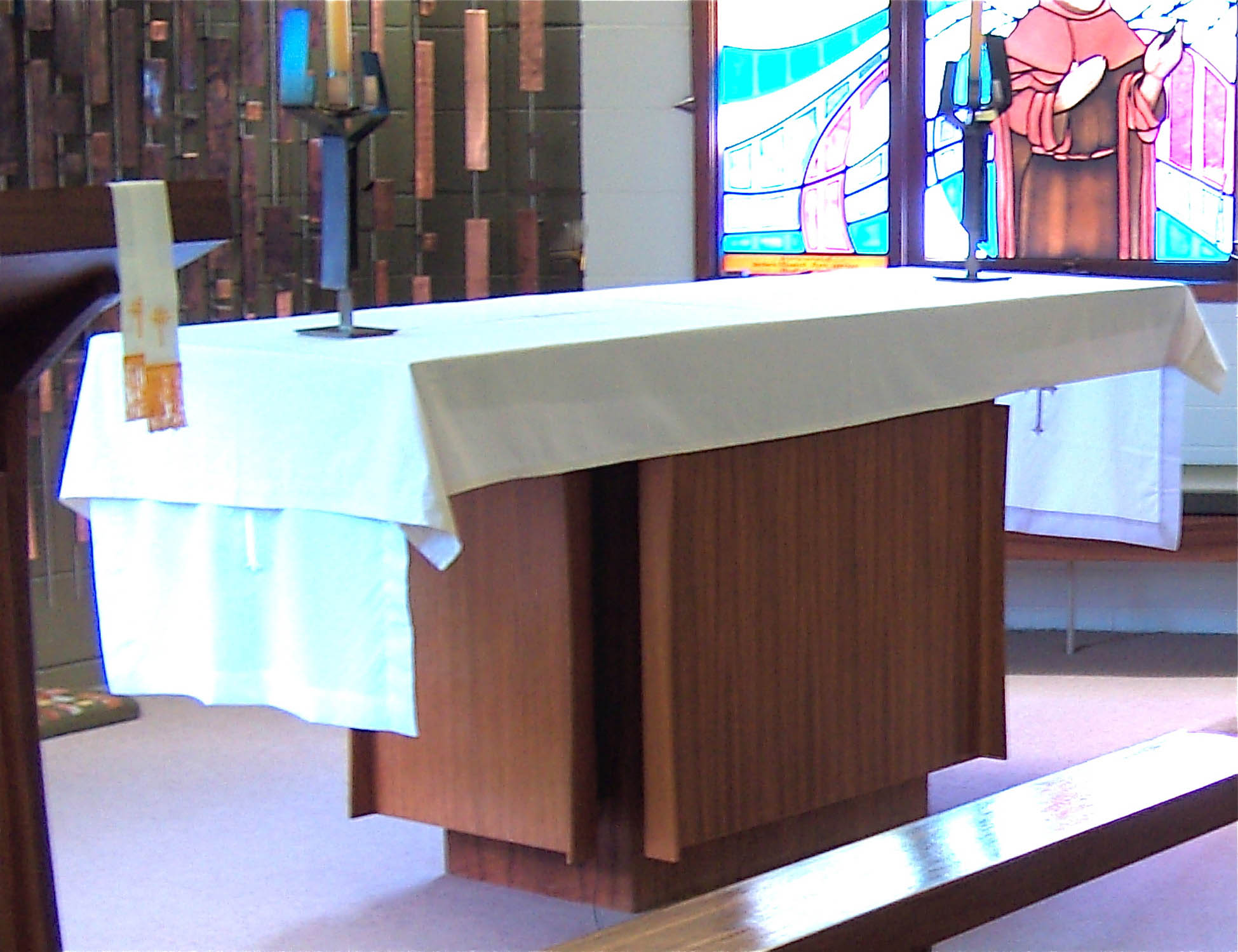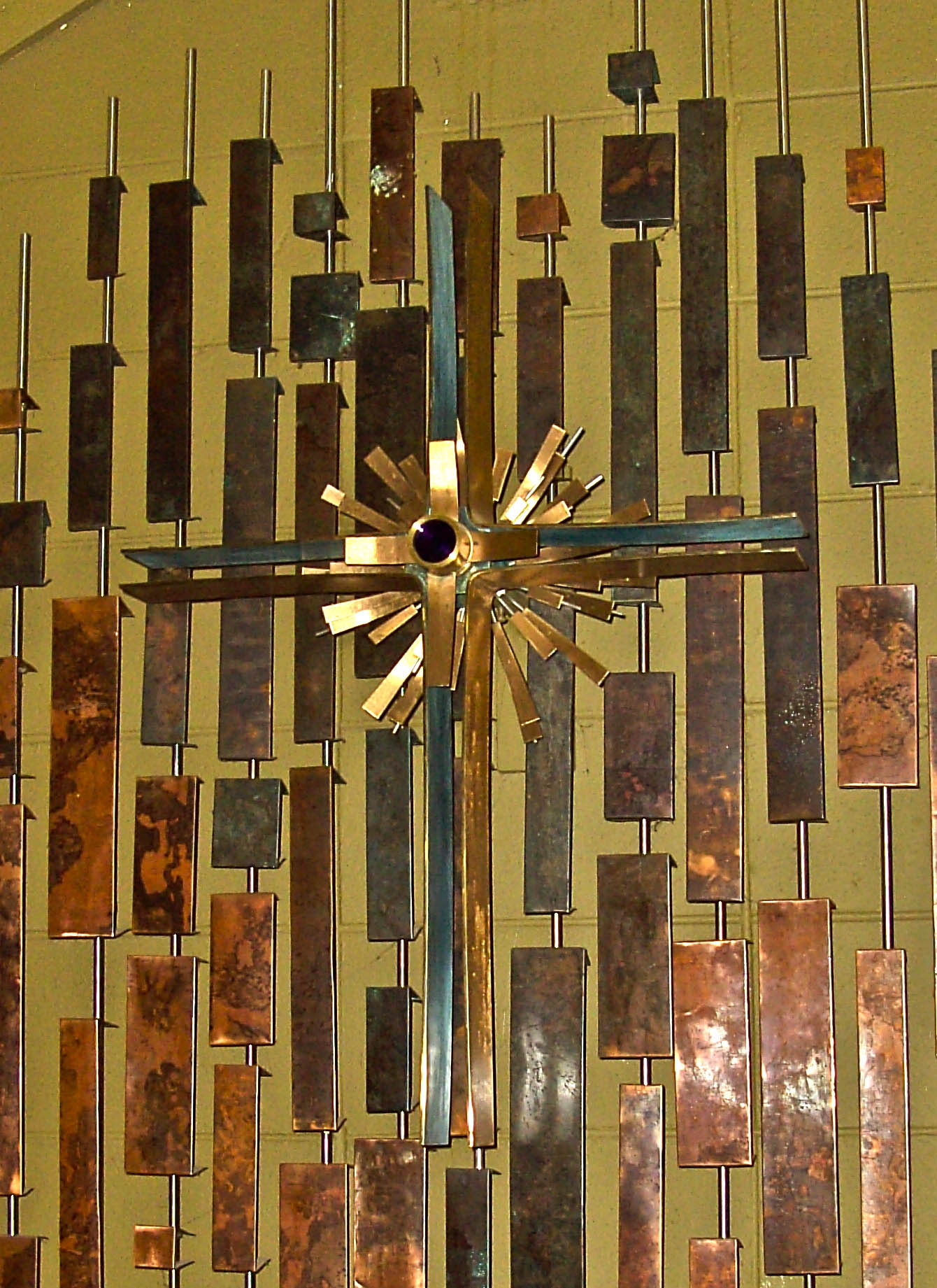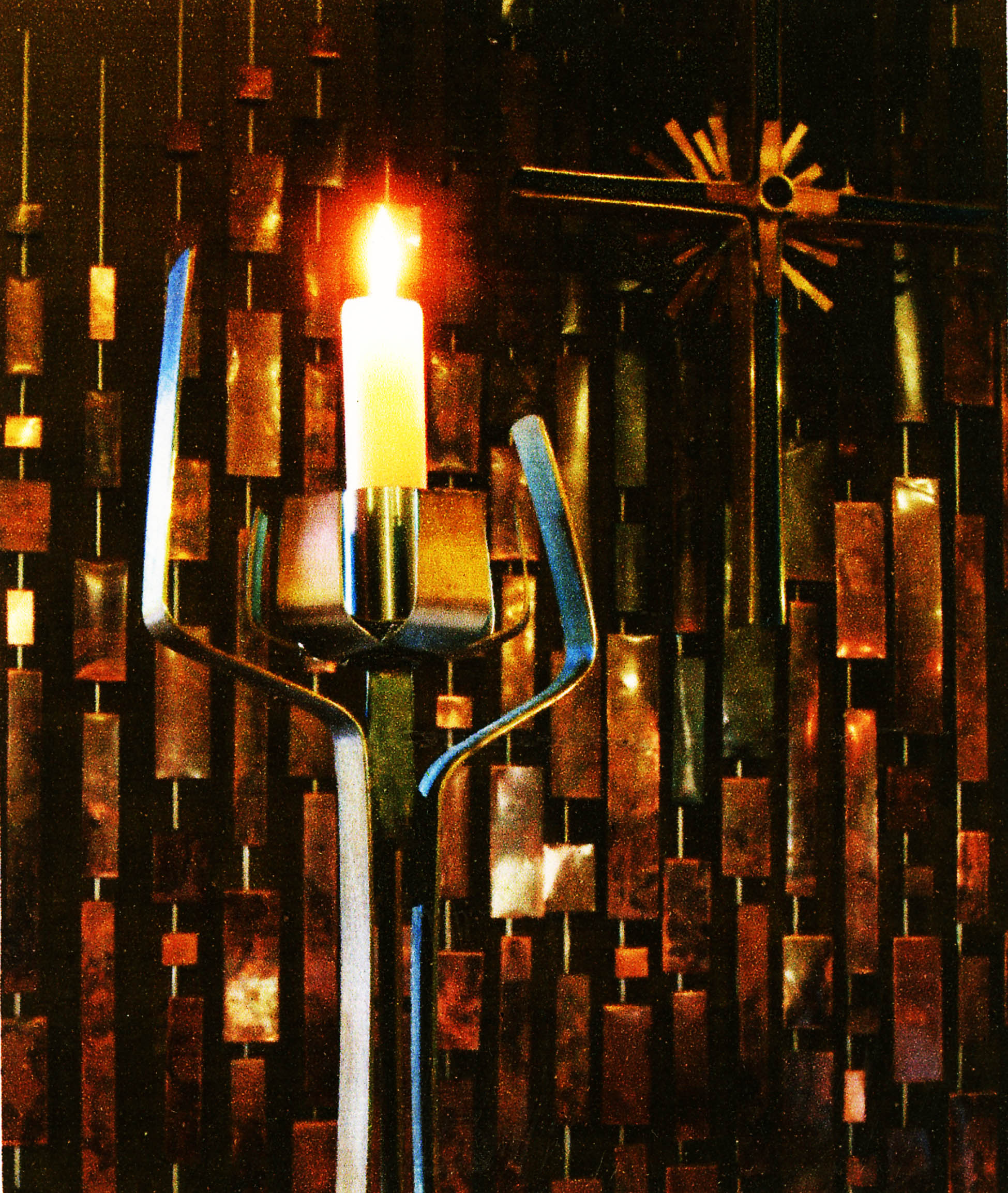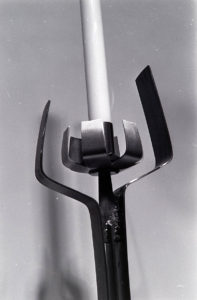Sometime around 1970 Neville Chenoweth, then the vicar at St Paul’s church, Manuka was busy building a new church – St David’s at Red Hill. At around that time Hilary and I had a joint exhibition of our metal sculptures at the Finniss Cres. Gallery in Red Hill and from that Neville, (later to become Bishop) asked me if I could design and make a reredos screen, cross, altar and candelabra for the new church.
I was busy experimenting at that time with sculptural fabrications of silicon bronze from discarded bronze water cylinders – a lovely metal that polishes up like gold and brazes without disintegrating, and it also patinates beautifully to lovely greens and blues. Used with stainless steel which has a lovely complementary silver makes them an excellent pair for ceremonial sculptural forms.
Reredos screen (background to screen blockwork)
Altar candelabra (designed for minimal visual interference with reredos screen)
Altar looks much better with minimum altar cloth cover
In subsequent years Neville asked me to do other ecclesiastical pieces shown in use together in front of the reredos screen – the cross itself at the top centre of the screen, the wooden altar with its two bronze candelabra and the Pascal candelabrum at the extreme right of the altar are all shown separately on the following pages…..
1(see altar , altar candlesticks, Pascal candle, font in that order (better photos needed)
It is one of the sad things about designing that has often concerned me – I do my best as a designer to find out what is in the mind of the client – to try to picture their expectations from a word picture, which is almost impossible due to their lack of skill in matching words and meanings to materials, functions, relativities, colours, textures. Also, the words they select often have different meanings in the designer’s mind and the whole thing is vastly compounded when dealing with a committee !
As if that isn’t bad enough, the finished ensemble of related pieces in the designer’s mind, as in the photo above, can be completely nullified when it is decided by some member of the church that an altar must have a white cloth over it – and doesn’t put it on straight. It becomes a dominant distraction from the envisaged ensemble who can sub-consciously perceive the discordance. Surely a simple white runner cloth of lesser width than the altar top would look much tidier than what appears to be a tablecloth.

The stained glass windows were added later without reference to me as the designer of the chancel and (in my opinion) detract from the already created atmosphere. This lack of appreciation of design ethics can completely ruin a carefully thought out design concept.
This pothole in the road to better design and our understanding of it can, I feel, be traced back to our convict origins, our subsequent educational aspirations, our values, our teacher training system and finally in our moulding of young minds in the understanding of design and where it fits in our school curricula. See my other writings – it is a deep and pervasive topic….I must write something about this discordance because I believe it is a root cause of a lot of psychological unease.
The altar candlesticks were designed to be as unobtrusive as was reasonable and were made by me to be ‘edge on’ to the congregation so as not to interfere with the visual ‘rapport’ with the officiating clergy or the reredos screen. I also made the cross and the reredos screen, but Kees Westra made an excellent job of the altar to my design and the Pascal Candle was made by a Fyshwick firm except for the bronze ‘wings’ which I made and supplied. (see later)
The reredos screen was designed to do the most with the least – to hide the concrete block pattern of the structural wall. The copper sheet panels (old weathered roofing sheets) enabled a variable pattern of colours, size and location at increasing spacing from the centre to focus attention on the cross. The panels were treated with various chemicals to obtain a variety of greenish brown patinations to give visual texture.





All made in silicon bronze except for the inner‘ petals’ which were in polished stainless steel so that easy cleaning of the dripped wax could be cleaned off without scratching the metal surface.
The inner surfaces of the outer’wings’ are in the green patination similar to those on the cross.


